JAMAICA | Commemorating Sam Sharpe Day, December 27- The Strike for Freedom
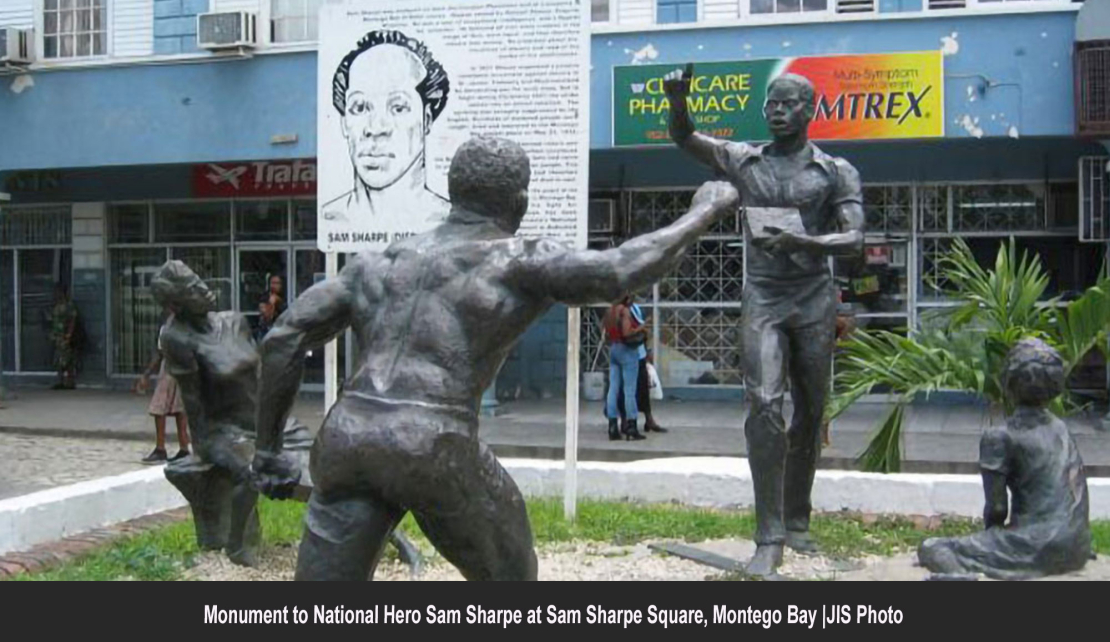
MONTEGO BAY, December 27, 2022 - Today December 27 is Sam Sharpe Day, and marks the 191st anniversary of the Sam Sharpe War which began just after the Christmas festivities on the 27th of December 1831 in Kensington, St. James. It is important that we understand the significance of that strike for freedom which became the proverbial straw that broke the back of chattel slavery in the British Caribbean colonies.
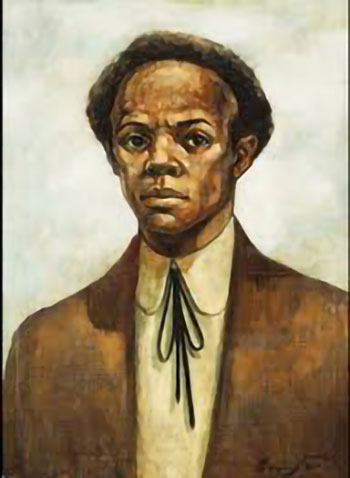
Delroy A. Reid-Salmon in his book “Burning for Freedom,” argues that “there are diverse understandings of the Sam Sharpe revolt. Some argue that it was a religious war. Others say it was a political event. There are still those who contend that it was an example of industrial action or social protest that resulted in a violent revolution.”
Salmon notes that for him, as a theological scholar, the Sam Sharpe Revolution was “a theological act signifying the revelation and involvement of God in history. This revelation takes the form of freedom righteousness and hope,” he said.
The Reverend C. S. Reid, in the forward to his book “Sam Sharpe, - From Slave to National Hero,” acknowledged that Sharpe “struck a hammer blow against an economic and social system which was entrenched in the Americas and which many considered essential to the continued prosperity of Europe.
“To the extent to which the war initiated by Sam Sharpe affected the flow of the struggle which led to the abolition of the slave system in the British Empire, to that extent it may be claimed that our National Hero, in his bid for freedom, has earned a niche in the Social History of the world of the nineteenth century,” Reid said.

She said “A petition from enslavers to the Jamaica House of Assembly in 1832 described what they called “rebellion” but we know was a war, as one “unparalleled in the history of the colony, whether for depth of design or the extent of misery and ruin which it has entailed on the inhabitants.”
“those ‘inhabitants’ to which the petitioners referred, were plantation owners and other enslavers whose wealth was threatened by African freedom.” She however noted that “they could not stop the tide of Emancipation, as Africans before and After Sharpe, used every strategy at their disposal to ensure the defeat of enslavers.”
She went on to add however, that unfortunately, the effort to defeat true emancipation actively continues in action to this day on both sides of the Atlantic.
“In Jamaica, calls for a shift from the monarchical system of government to a Republic is seen as mere symbolism rather than a final act of emancipation. It is time for us to lose our “intellectual timidity” as Hilary Beckles has said, and complete the mission of our ancestors; otherwise, it would appear as if Daddy Sharpe and his army of revolutionaries died in vain and that his elevation to the status of National Hero of Jamaica was “mere symbolism.”
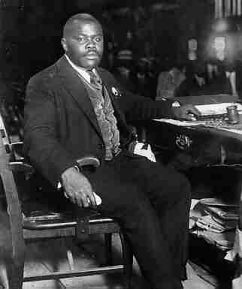
Despite the fact that Samuel Sharpe had been designated a National Hero for his activities which led to the abolition of slavery in the British colonies, his importance was not largely recognized until former member of parliament for South St. James Derrick Kellier, took action to highlight the revolutionary activities which led to the 1831 Sam Sharpe War.
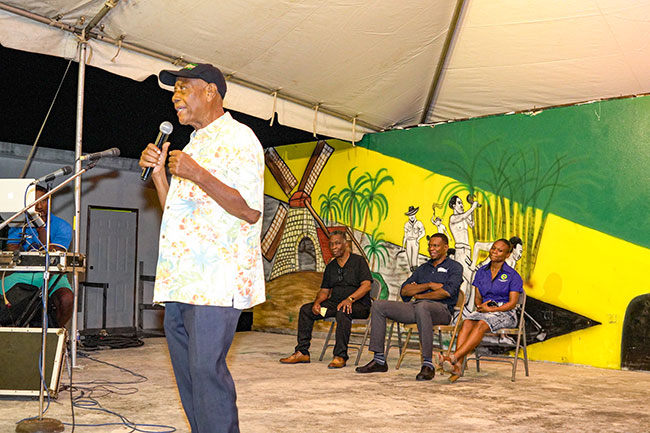
They were advised by the late historian Mr. Don Carter Henry, that Tulloch Castle was the site of the trash house of the Estate, owned by John Tulloch that was set ablaze on December 27 1831, and which signaled the start of the revolution.
Kellier was unrelenting in his efforts to promote the importance of Samuel Sharpe, to both the PNP and JLP administrations and the need to designate a day in his honour.
Culture Minister the Hon. Olivia ‘Babsy’ Grange agreed with Kellier's argument took over the funding of the event, Agreed to provide oversight from the Ministry of Culture, prepared the Cabinet Submission and the approach to the Governor General which resulted in the 2020 declaration of December 27 as Sam Sharpe Day.
Henceforth, the function to honour Sam Sharpe would be fully state sponsored. Since then however, the deadly SARS COV-2 epidemic and worldwide pandemic intervened.
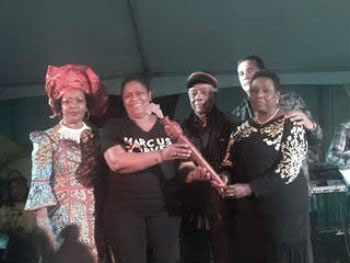
Mr. Kellier maintained that it was important to get the schools and the communities in south St. James, aware of the treasure trove of historical wealth that lies unattended in the southern section of the parish, and which was home to some of the most important battles in the history of the fight for emancipation by enslaved Africans and their descendants in Jamaica.
Mr. Kellier pointed to the Montpelier battle between enslaved Africans bearing machetes and sticks against soldiers of the British regiment bearing guns and heavy firepower, who were almost over-run by the Africans. Many of the descendants of these enslaved Africans, he said, were still alive today and were unaware of the fight their ancestors had to undergo to guarantee their freedom.
Sam Sharpe’s protagonism in bringing about the revolutionary war of 1831/32, precipitated the historical parliamentary vote in the British House of Commons in August 1833, which ended slavery in the British Commonwealth.
The Slave Emancipation Act was passed, giving all slaves in the British empire their freedom, albeit after a set period of years. The vote dismantled large-scale plantation slavery that existed in Britain's tropical colonies, where the enslaved population was usually larger than that of the white colonists.
Plantation owners received compensation for the 'loss of their slaves' in the form of a government grant set at £20,000,000.
However, in stark contrast to the plantation owners, the enslaved people received no compensation. In fact, their condition of actual slavery remained, but in yet another form. As stipendiary workers the former slaves continued to face much hardship: They remained landless, and the wages offered on the plantations after ‘freedom’ were extremely low.
“In 1833, Britain used 40% of its national budget to buy freedom for all slaves in the Empire. Britain borrowed such a large sum of money for the Slavery Abolition Act that it wasn’t paid off until 2015.
It is estimated that this compensation to slave owners for the lost capital associated with freeing slaves is the equivalent of around 17 billion pounds today. This payout was a massive 40% of the government's budget and required many bonds to slave owners to effectuate the law.
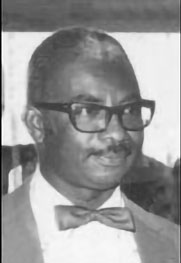
It was not until midnight on 31 July 1838, that the second part of the 1833 Act came into force when enslaved people in the British West Indies finally gained their freedom.
Enslaved Africans throughout the Caribbean had continued to rebel over the wicked and unusual institution which kept them in slavery.
Rebellions and resistance increased and in 1823 in Demerara, British Guiana, over 13,000 slaves joined a rebellion because they felt that the local plantation owners had refused to obey British orders to set them free.
The pièce de résistance came in Western Jamaica on the 27th of December 1831, when a trash house on the Tulloch Castle sugar estate, owned by John Tulloch, and the nearby Kensington Great House on the Kensington Sugar Estate in St. James, owned by John Morris were set ablaze with what became known as the Flames of Freedom signaling the start of the war.
It was two days after Christmas and after the Boxing Day holiday. The move became the ultimate in a trajectory of actions towards emancipation of slavery in Jamaica. It has come to symbolize the struggles of our ancestors to ensure that we, their children and grandchildren, will no longer be slaves.
At the outbreak of the Sam Sharpe war in 1831, the Tulloch Castle Estate and the Kensington settlement were together a clan-related business enterprise, operated by the Scottish families of Tulloch, Morris, and to some extent, Gordon, all Scotsmen whose socio-economic enterprise was built up by the slave society which weaved itself into the absenteeism policy of the Sugar Estate plantocracy society.
The Kensington Great House stood on an elevation of 1,760 ft above sea level and commanded a wide view of the parish of Manchester, and a near view of Westmoreland, Hanover, and the hilly and undulating landscape of the parish of St. James with its fringed horizontal sea coast.
Separated from the Tulloch Castle property by a public roadway which skirts around a mountainous out-crop of the fringes of the cockpit country at an angle of about 60% of the Kensington Great House and the Tulloch Castle trash house, were set on fire on December 27, 1831 to signal the start of the Sam Sharpe Rebellion, then termed the Kensington Rebellion, or the Baptist War, because of what was thought to be the involvement of the Baptist missionaries, most of whom actively encouraged urged the freedom for the slaves.
The war began on the Kensington Estate in St. James and followed a period of meticulous planning, wide consultation and fierce determination.
After the Abolition of the Trans-Atlantic Trade in Africans in 1807, conditions on plantations worsened and the enslaved Africans were subjected to even more heinous punishments and inhumane treatment. The Amelioration Plan of 1823, passed by the British Parliament as part of a plan to improve conditions on the plantations, was widely spurned by the planters even as conditions on plantations further deteriorated.
Soon, the enslaved Africans led by Sam Sharpe began to meet secretly and plan for what was to be the first industrial action in the form of a workers strike to be recorded in Jamaican history and to be staged right after Christmas.
This was further exacerbated by news circulating that slavery was to be abolished and the feeling that the planters were conspiring together to hide the truth. Soon word of the plan to take action reached the ears of some planters. Troops were dispatched to St. James and war ships stationed in Montego Bay and Black River harbours.
The late historian Don Carter Henry who until his death lives at Kensington, in his book, “Flames of Freedom,” said on the night of December 27, 1831, when it became obvious that the planters were not relenting, the Kensington estate was set on fire by an enslaved girl (now known as a ‘Fiyah’) who lamented that “I know that I will die for this, but my children shall be free,” before setting fire to the trash house which started the conflagration. The Emancipation War had begun.
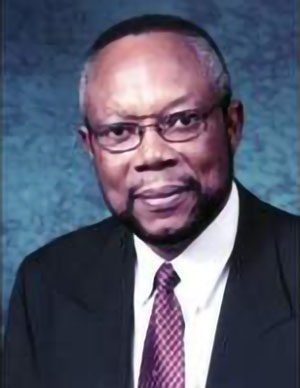
Scott maintains that it was a slave known as John Dunbar was the person who arranged for the thrash house at Kensington Estates to be set afire and started the 1831/32 slave rebellion. “He would not have been chosen for such a huge task to send the first fire signal across western Jamaica had he been a wishy washy and flippant individual. So what was he?” Scott asked.
He explained that Kensington Estates, like all other large estates, had its own slave hospital and armoury. “John Dunbar was the resident doctor (medicine man or myalist) at that hospital. Medicine men along with the priest or “Bongo Men” of the “Convince Cult” were the healers among the slave society and even some of the white society that would privately seek their assistance.”
Scott said his research indicated that “Sam Sharpe and his lieutenants chose a man, John Dunbar who was respected alike both in the white society and the slave society ... a man of cool demeanor and an ardent Christian at the Salters Hill Baptist Church. The plan was if there were attempts by the authorities to force slaves to go to work again as slaves, then the rebellion should begin.”
The Morris family, owners of Kensington, bailed out of the property very early the morning of December 27, 1831 for Montego Bay. By midday, members of the St James and combined Western Militia based at Barracks Road and Haddo in Hanover flooded the Kensington Estates and began to force the slaves to make preparation to return to servile labour the next day, December 28,1831.
“John Dunbar waited patiently for nightfall when the planned signal would have been seen as far as St Elizabeth to the south and Falmouth to the east and Dunbar lit the thrash house.
“Those lies about John Dunbar, who was acting most soberly and with good timing in managing the war at Kensington Estate and also sending the first fire signal, were augmented by another lie which claimed that the slaves on reaching Long Hill from Montpelier stopped to quarrel among themselves as to whom should be crowned king in MoBay,” Scott maintains.
“Bearing in mind that their leader Sam Sharpe was alive and well, no such quarrel would have been necessary. There were four columns of slaves marching towards the town. The second came down the Montego Bay River Valley and were three miles from the town centre when they set fire to the Bellfield and Fairfield Great Houses, burning both to the ground. The third came from Round Hill/Haddington/New Mills areas across the Great River Valley and the fourth came from the north east side,” he pointed out.
This soon escalated and the flames of freedom could be seen on plantations as far as St. Ann in the east and St. Elizabeth in the west. By this time, the original plan of Sam Sharpe to stage non-violent resistance was overtaken by an organized system of protests, burning of plantations and mass exodus from plantations. 50,000 enslaved Africans took part in the incursions.
When the War was quelled several weeks later on the 8th of February 1832, fifteen great houses remained standing. Some 39 plantations were burnt and 14 whites killed. The planters’ response was horrific. Inquisitions were hurriedly convened and more than 500 enslaved Africans summarily executed or punished in various other ways.
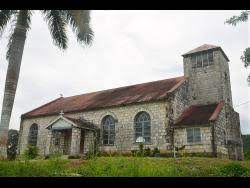
This took place in Lima Square, it is located about ten minutes drive, east from Adelphi Square St James.
The attack was launched from the Anglican Church in Adelphi by the Colonial Church Union (CCU), founded by the Rev George W. Bridges, Rector of the St Ann's Parish Anglican Church.
During the conflagration, the Adelphi Anglican Church was transformed into a military barracks and a jail to fight the slaves in that area. The reprisal on the slaves at Lima was launched from the church.
According to Shalman Scott, “It is still the biggest mass murder in the history of Jamaica both under the Spanish and the English Occupation of Jamaica.”
Scott pointed out that historian Clinton Black’s book History of Jamaica, approved for public education, did not include the Lima Massacre nor the Sam Sharpe Revolution in any of the book’s editions from 1958 to 1973.
Thereafter he was forced to mention both important incidents in light of Sam Sharpe impending elevation to National Hero in 1975. Prior to this, information was vaguely referred to in the Jamaican Archives, as ‘the Infamy of Lima’ leaving some readers doubt as to whether reference was being made about Lima, Peru to believe it was an incident there.
The Western Militia based at Barracks Road in Montego Bay and Haddo in Hanover, led by Major William Grinion played a crucial Role in the Lima Massacre.
Scott describes the CCU the local equivalent of the Ku Klux Klan of the United States, comprising Planters, Anglican Pastors, the Western Militia, and Maroons
One year later, as a direct result, the British Parliament in August 1833 passed an Act for the Abolition of Slavery in the British West Indies.
In Kensington, St. James, John Tulloch, the owner of the Tulloch Castle Estate died in 1837, one year before the full emancipation of the slaves in 1838.
On May 23, 1832, a proud and defiant Sam Sharpe was publicly hanged in the Montego Bay Square, that now bears his name, fulfilling words he uttered: “I would rather die on yonder gallows than live one more day of slavery”. He had accepted death on the scaffold as freedom from the unbearable and repugnant miseries of slavery and as the only means by which freedom was attainable.
-30-

 Ar
Ar  En
En